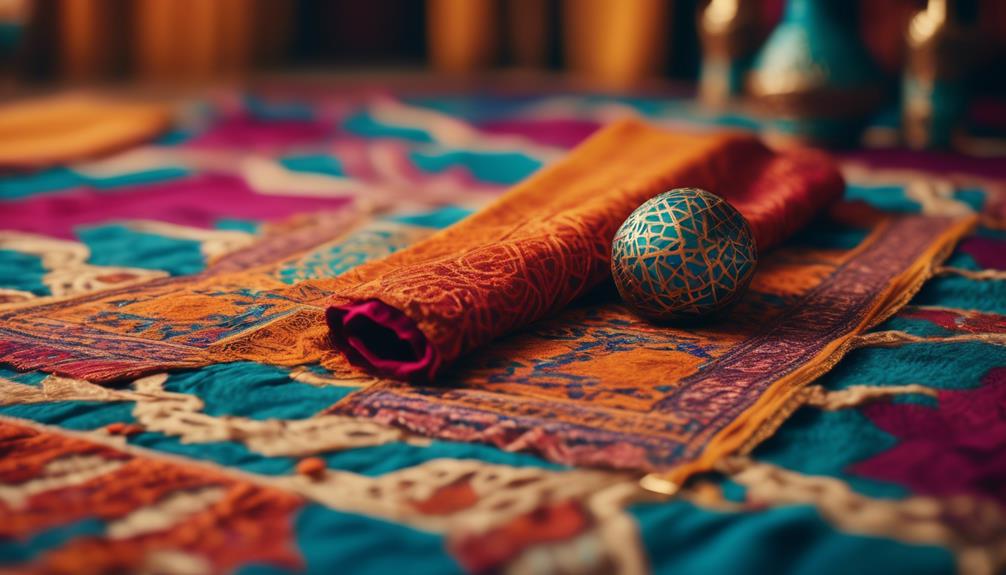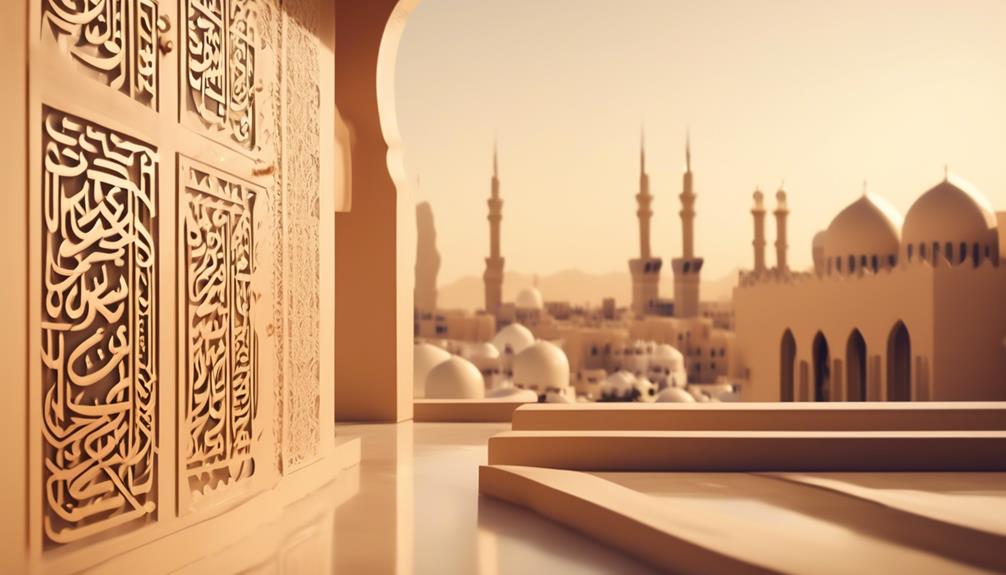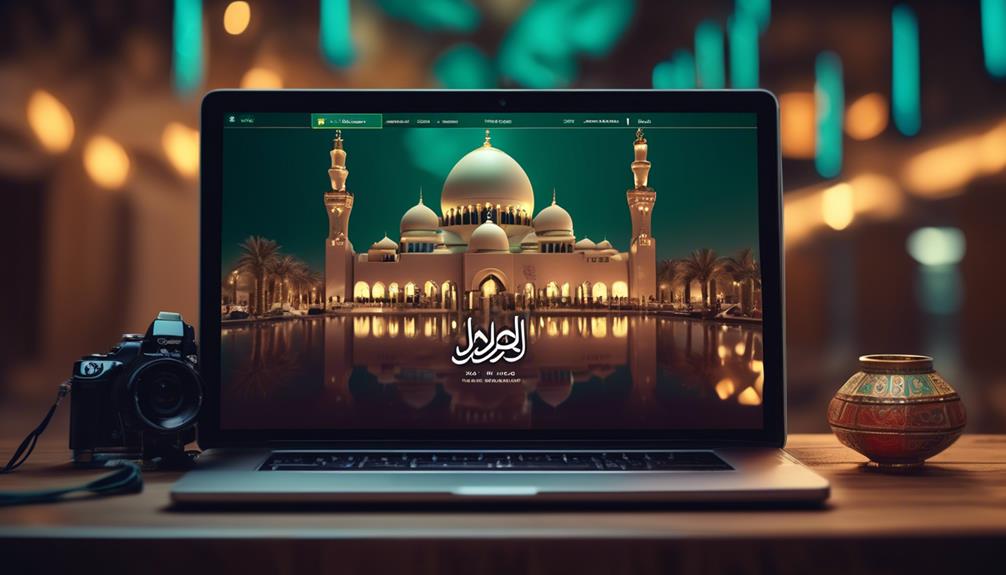Saudi Arabia, a country deeply rooted in its rich cultural heritage, has a unique influence on various aspects of life, including web design practices. The way websites are designed in Saudi Arabia is a reflection of the country's traditional values, aesthetics, and social norms.
From the color palette choices to the use of traditional imagery and the layout preferences, Saudi culture plays a significant role in shaping the web design landscape.
In this discussion, we will explore the impact of Saudi culture on web design practices, uncovering the cultural influences that shape every aspect of a website, and how these practices engage the Saudi audience in a meaningful way.
So, let's embark on this journey to unravel the fascinating world of Saudi web design and discover how culture shapes their digital experiences.
Cultural Influences on Color Palette

Cultural influences play a significant role in shaping color palettes in web design practices in Saudi Arabia. The colors used in web design are not chosen randomly, but instead, they are carefully selected to reflect the cultural symbolism and evoke specific emotions within the Saudi Arabian audience.
One key cultural influence on color palette in Saudi Arabian web design is the Islamic religion. Islam holds a prominent place in Saudi Arabian society, and its teachings and values greatly influence the design choices. For example, the color green is often used in web design to represent Islam and is associated with growth, renewal, and prosperity. This color is chosen to evoke a sense of tranquility and peace in the viewers.
Another cultural influence on color palette is the rich history and traditions of Saudi Arabian culture. Traditional colors such as gold, red, and black are often incorporated into web design to reflect the country's heritage. Gold symbolizes wealth and luxury, while red represents strength, courage, and passion. Black, on the other hand, is associated with power and elegance. These colors are chosen to create a sense of pride and respect for the Saudi Arabian culture.
Traditional Imagery in Saudi Web Design
In addition to the careful selection of color palettes, Saudi web designers also incorporate traditional imagery to further reflect the rich cultural heritage of the country.
Cultural symbolism plays a significant role in Saudi web design, as designers aim to create websites that resonate with the local audience and convey a sense of national pride.
One common element used in Saudi web design is calligraphy. Arabic calligraphy holds deep cultural and religious significance in Saudi Arabia, and it is often incorporated into website designs to add an artistic and authentic touch. The elegant and flowing nature of calligraphy adds a sense of sophistication and tradition to the overall design.
Moreover, calligraphy is not only used for decorative purposes but also to convey important messages or highlight certain sections of the website. By incorporating calligraphy in Saudi web design, designers showcase their respect for tradition and their commitment to preserving cultural heritage in the digital realm.
This approach allows users to connect with the website on a deeper level and fosters a sense of familiarity and belonging.
Layout Choices Reflecting Saudi Culture

Reflecting the cultural values and aesthetics of Saudi Arabia, the layout choices in Saudi web design are carefully crafted to create a visually appealing and user-friendly experience. These layout choices are influenced by various factors, such as color symbolism and typography choices, which play a significant role in Saudi culture.
Color symbolism is an integral part of Saudi culture, and it is often used in web design to evoke specific emotions and convey certain messages. For example, the color green represents prosperity, growth, and renewal in Saudi Arabia. Therefore, it is commonly used in web design to signify success and prosperity. On the other hand, the color white symbolizes purity, cleanliness, and peace, which are highly valued in Saudi culture. It is often used as a background color in web design to create a sense of simplicity and elegance.
Typography choices also play a crucial role in Saudi web design. Arabic calligraphy is highly regarded in Saudi culture, and it is often incorporated into web design to add a touch of authenticity and cultural identity. Traditional Arabic fonts are used to convey a sense of heritage and tradition, while modern fonts are used to create a contemporary and stylish look.
Content Strategies for Engaging Saudi Audience
The selection of appropriate content strategies is crucial for effectively engaging the Saudi audience and ensuring a successful web design that resonates with their cultural values and preferences. When it comes to Saudi web design, localization techniques play a significant role in creating content that is tailored to the Saudi audience.
Localization involves adapting the language, imagery, and overall tone of the website to align with Saudi customs and traditions. This can include using Arabic language prominently, incorporating culturally relevant visuals, and ensuring that the content is respectful and sensitive to local norms and sensitivities.
Another important aspect of content strategies for engaging the Saudi audience is building trust through website design. In Saudi Arabia, trust is a key factor in the decision-making process, and the design of a website can influence the level of trust that users place in it.
To build trust, websites should prioritize transparency and credibility by providing clear and accurate information, using testimonials or reviews from trusted sources, and showcasing relevant certifications or affiliations. Additionally, ensuring that the website is user-friendly, with easy navigation and a responsive design, can also contribute to building trust and keeping users engaged.
Navigational Elements in Saudi Web Design

Navigational elements play a crucial role in the design of Saudi websites, enabling users to easily navigate and access the desired information or services. In Saudi web design, cultural symbolism is often incorporated into the navigation elements to create a sense of familiarity and comfort for users.
For example, icons or symbols that are commonly associated with Saudi culture, such as the Kaaba or palm trees, may be used as navigation buttons. This helps users identify and understand the purpose of each navigation element more intuitively.
When designing navigational elements for Saudi websites, user experience considerations are also taken into account. Saudi users appreciate simplicity and clarity in website design, so the navigation should be straightforward and easy to understand. It is important to use clear labels and avoid jargon or complex terminology.
Additionally, the placement of navigational elements should be consistent and easily accessible, either at the top or left side of the webpage, to ensure a seamless and intuitive user experience.
Frequently Asked Questions
What Are Some Common Fonts Used in Saudi Web Design That Reflect the Cultural Aesthetic?
Traditional calligraphy and rich color palettes are commonly used in Saudi web design to reflect the cultural aesthetic. These elements add a touch of authenticity and cultural identity to the designs, creating a visually appealing and culturally relevant user experience.
How Do Saudi Web Designers Incorporate Islamic Motifs and Symbols in Their Designs?
Incorporation of Islamic motifs and symbols in Saudi web design is influenced by the rich cultural heritage of Saudi Arabia. These design elements play a significant role in reflecting the values and identity of the society, creating a unique visual aesthetic.
Do Saudi Web Designers Prioritize Mobile Responsiveness in Their Layouts?
Saudi web designers prioritize mobile responsiveness in their layouts by adopting a mobile-first approach. This is influenced by cultural values that emphasize convenience and accessibility, reflecting the increasing use of mobile devices in the region.
What Are Some Content Strategies Specifically Tailored to Engage Saudi Audiences?
Content localization and social media engagement are two key strategies to engage Saudi audiences. By adapting content to their language, culture, and preferences, and actively participating in popular social media platforms, web designers can effectively connect with the Saudi market.
How Do Navigational Elements in Saudi Web Design Cater to the Preferences and Browsing Habits of Saudi Users?
Navigational elements in Saudi web design are tailored to cater to the preferences and browsing habits of Saudi users. Understanding Saudi web design involves analyzing how these elements adapt to user needs, ensuring a seamless and intuitive browsing experience.
Conclusion
In conclusion, Saudi culture plays a significant role in shaping web design practices.
The use of specific color palettes, traditional imagery, and layout choices reflects the cultural values and preferences of the Saudi audience.
Additionally, content strategies tailored to engage the Saudi audience and navigational elements that align with their expectations are crucial in creating successful websites in Saudi Arabia.
Understanding and incorporating these cultural influences are essential for effective web design in the Saudi context.

